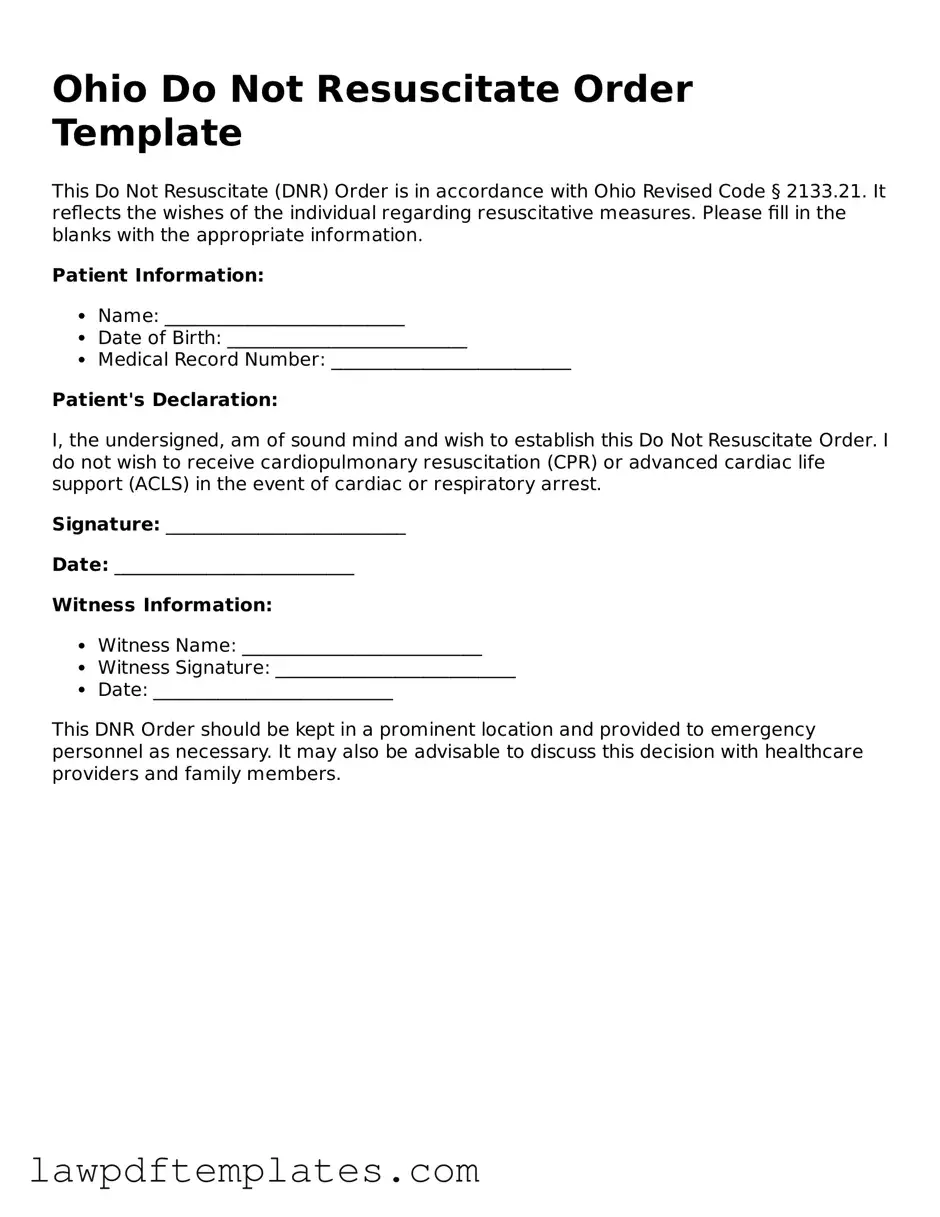Free Do Not Resuscitate Order Template for the State of Ohio
The Ohio Do Not Resuscitate Order form is a legal document that allows individuals to express their wishes regarding medical treatment in the event of a life-threatening situation. By completing this form, a person can indicate that they do not wish to receive cardiopulmonary resuscitation (CPR) or other life-saving measures. Understanding and utilizing this form can provide peace of mind for both patients and their families during critical moments.
Take control of your healthcare decisions today by filling out the Ohio Do Not Resuscitate Order form. Click the button below to get started.
Get My Do Not Resuscitate Order
